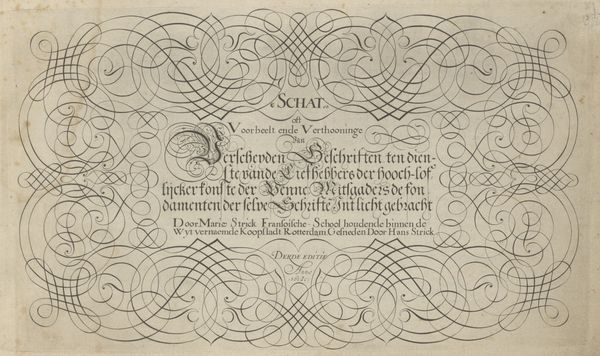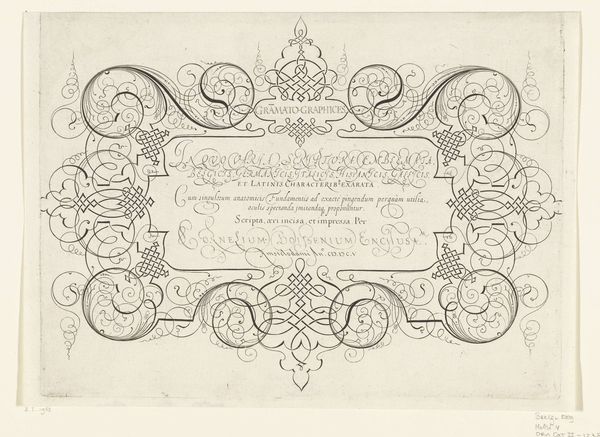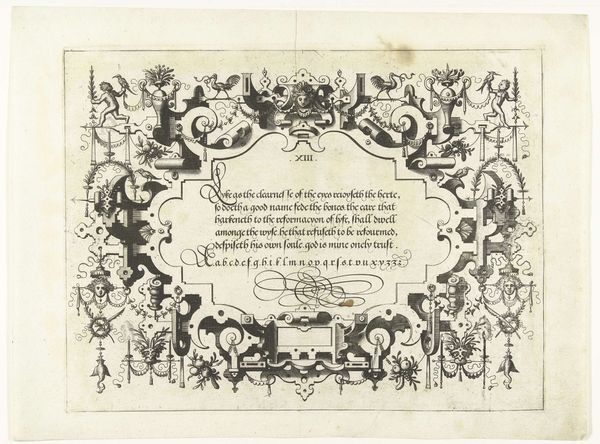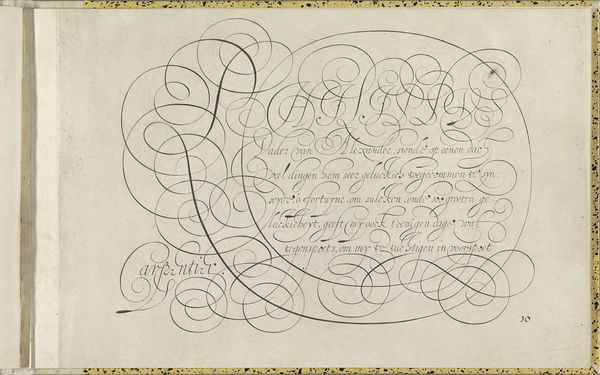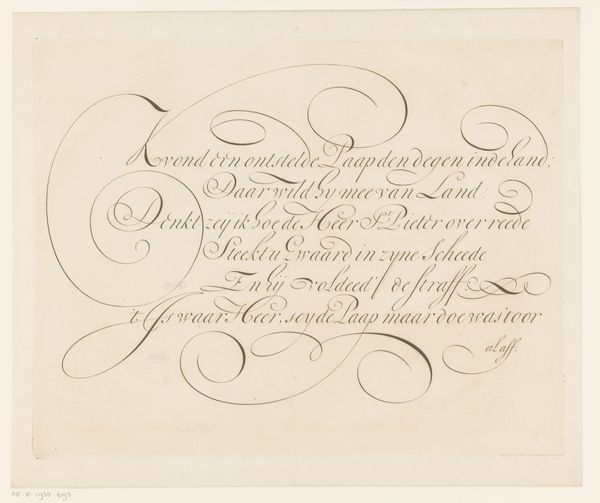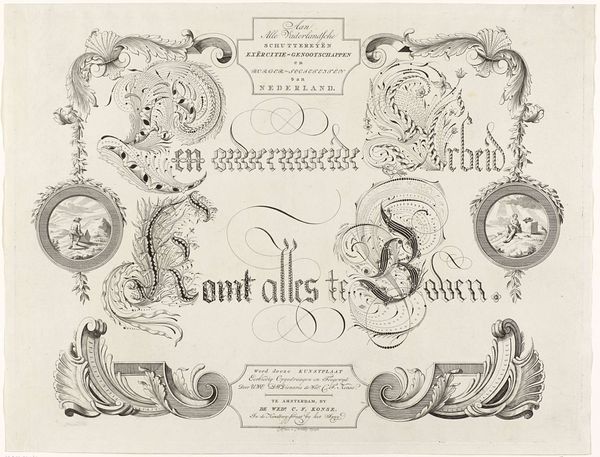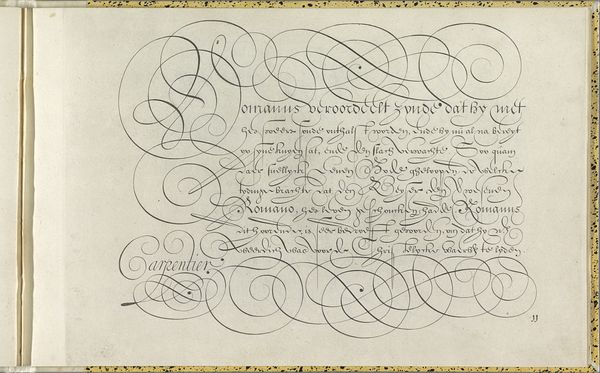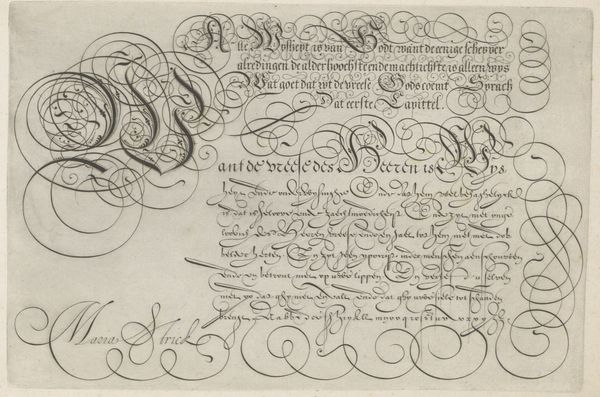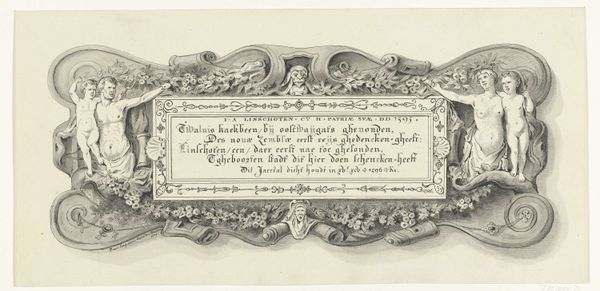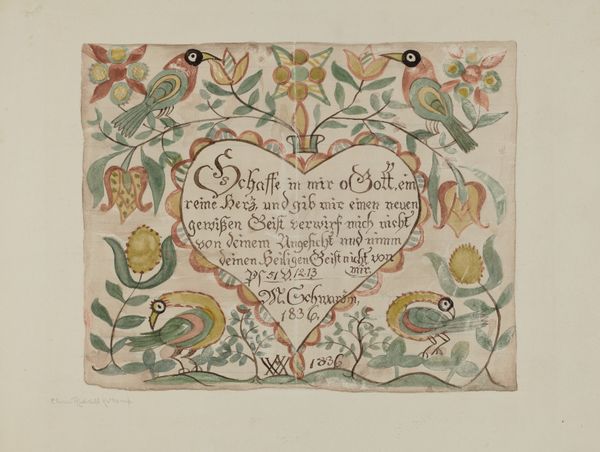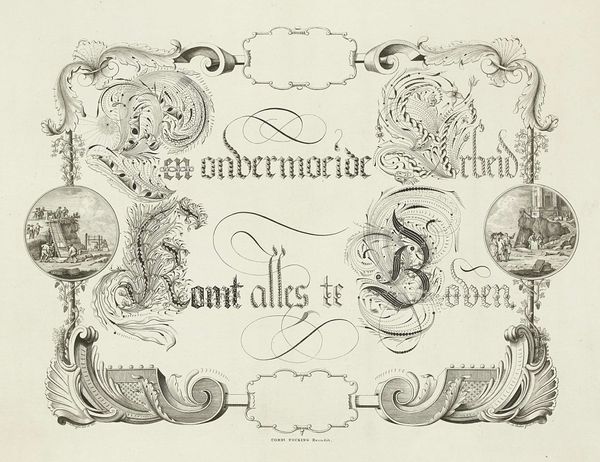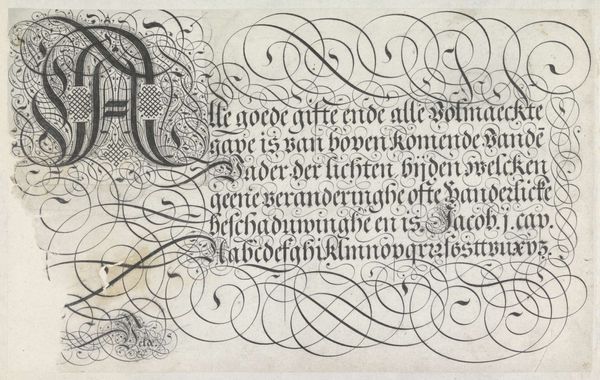
drawing, ink, pen
#
drawing
#
hand-lettering
#
hand drawn type
#
hand lettering
#
ink
#
geometric
#
pen work
#
pen
#
northern-renaissance
#
calligraphy
Dimensions: height 170 mm, width 241 mm
Copyright: Rijks Museum: Open Domain
Curator: What immediately strikes me about this drawing, titled "Schrijfvoorbeeld" from 1617-1618, is its intricate and delicate quality. The lines create such a rich, textural experience, it looks incredibly elaborate. Editor: Elaborate, yes, but also impressively disciplined, considering it's ink on paper. One can really see the craftsman's dedication in the creation of the precise strokes and carefully orchestrated patterns. What level of training was required, I wonder? Curator: Precisely. We're looking at pen and ink work by Hans Strick, and while categorized as a drawing, it really transcends that label. It pushes the boundaries of calligraphy into almost abstract, geometric design, reflective of the Northern Renaissance style. The entire composition is about line and form; even the negative space contributes to the overall visual rhythm. Editor: Indeed. Think about the working conditions too—the lighting, the paper quality, the tools. Ink was painstakingly created from raw materials. The physical act of creating something like this required intense labor and would have been very specialized work. Were pieces like this primarily demonstrations of skill meant to secure commissions, or personal projects? Curator: One could speculate, and it functions on multiple levels. Formally, notice how the weight and direction of each line guides the eye, how the density of the calligraphic swirls contrast with the open text in the middle ground. The framing effect those patterns achieve elevates the central message to something quite profound, regardless of the exact text itself. Editor: True. The script, though ornate, speaks of functionality. Consider the audience—were they appreciating it for content, display of the maker’s abilities, or some kind of ritual or commemorative function? Understanding this would surely deepen the appreciation for its material origins and purpose, enriching our engagement with this work. Curator: Absolutely, it presents a synthesis of aesthetic form and skillful craft that invites layered readings. Editor: A convergence of handcraft and formal precision—food for sustained thought indeed.
Comments
No comments
Be the first to comment and join the conversation on the ultimate creative platform.
